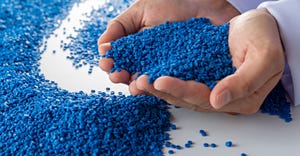The Business of Molding, Part 20 Tooling amortization: How not to get burned
September 21, 1998
Editor's note: This series of articles on business relationships of custom molders is from consultant Bill Tobin of WJT Assoc. |
It is becoming more and more common for the buyers of products to ask molders to amortize the tooling into the part cost. This puts all the risks on the molder, turning him into a financing organization and giving him the difficulty of the final payoff if the contract doesn't run its full life. Some advice:
Never take on this kind of a job from a first-time customer even if it is a bigname automotive, medical, or handheld appliance supplier. If this is your first experience with this customer, it might be the last you ever have in the molding industry.
Never take on a large program that will substantially eat into your commercial line of credit. If you have a $1 million line of credit and a $300,000 tooling package to amortize, your cash flow is going to be seriously interrupted. If you get into this habit with several vendors, you'll quickly revert from a molding company to a financing company that loans money to itself and then tries to pay it back. This over-leveraging is what causes financial collapse in banks, countries, and economies much larger than you.
How to Proceed
If you are asked to do this, here's how you should proceed. Look at the tooling cost and the life of the product. Bring out your calculator and figure out the total amount of principal and interest as if this were financed on a credit card paid monthly. Separate out the interest cost from the straight tooling cost. The 18 to 22 percent interest is probably not illegal in your state and will allow you to pay your points-over-prime-rate line of credit.
Table I. Ownership on sum of the payments |
Amortize both costs as though you were depreciating an asset using a method such as the sum of the years digits method (see Table I). Weight your costs so that the interest is paid first and the tooling cost is paid at the end of the contract.
Add this monthly cost to your part price quote. Make sure your quote is set up so that, for example, if the customer is buying a million molded sets annually and the amortization is for three years but he only buys half a million sets, he not only pays the higher molded-part price but also a higher amortized tooling component.
In your response to the request for quotation to amortize tooling costs include these stipulations:
You are the exclusive vendor for this part or product.
A schedule of repayment (ownership of the tooling) is available on request (however, don't send it).
You have an exclusive lien on the tooling until it is paid for in full.
At the end of the projected amortization time (this is a date, not a volume of parts), if the amount of product purchased hasn't fully paid for the tooling, the client agrees to pay in one lump sum the outstanding balance of the amortized amount.
Your client will pay all legal costs (yours and his) regardless of the outcome of any legal action as a result of a dispute over this contract.
Make sure the buyer signs your response and mails a copy to you before you accept his purchase order. Each time you send parts (samples or production) make sure this wording is on every invoice.
The reason you want these protections from the beginning may not be obvious until the trouble begins. You want to be the exclusive vendor to stop your client from finding a source in Taiwan and trying to cross bid you while you still don't have the tooling paid for. By loading all the interest in the front of the payment schedule, you'll make the profit on your money first, then whatever cost/profit you've quoted on the tooling.
If you have a lien on the tooling, your client cannot pull the tooling until you have been fully compensated for it and for the loss of a portion of your line of credit. More importantly, by being both the exclusive source and owner of the tooling, price negotiations now are favorable to you.
There is nothing more frustrating for a small business than to sue one of the Fortune 500. They tend to have more lawyers, more money to finance the legal action, and a tendency to bury you in paperwork, running up your legal costs. However, if the buyer, acting as a professional agent of his company, has agreed to pay your legal costs, it becomes very prudent for him to settle the matter with the minimum amount of legal interference possible.
Since the buyer asked for the tooling to be amortized and likely never specifically asked for the rate of interest, term of the amortization, or the structure of it, you are under no obligation to send it to him unless he asks directly for it. If he doesn't like the part cost with the tooling amortized over three years, you can give him a cost amortized over five years and lower his price. As long as you have the protections above and the guts to play this game you'll have ongoing production.
Sum of the Years Digits Finance Program
Assume the tooling bill is $125,000, the program spans three years, and you'll charge your customer 12 percent annual interest. Model this as though it were paid with monthly payments (36 payments) and your client suggests that this will be 2 million molded sets annually for the three years. Let's assume the molded sets are worth $1.23 each at the forecast volume. If you have trouble following these explanations, take your accountant or merchant banker out to lunch for a clearer explanation.
Calculate the total interest based on 36 payments at 12 percent as simple interest using this formula:I = (p)(r)(n)whereI = total interest paidp = principal (the amount loaned, or $125,000)r = rate charged for each payment, or 12 percent/12 payments per year = 1 percent/monthn = number of payments, or 36.($125,000)(.01)(36) = $45,000 in interest
Add this to the original amount: $125,000+$45,000 = $170,000. This is the total amount of tooling expense and interest to be amortized over 6 million molded sets over three years.
This now gives us two problems. The first is the tooling ownership; the second is how to price the volume splits.
Tooling Ownership
Go to your electronic spreadsheet and set up a schedule like the one shown in the table. For three years assume payments numbered one through 36.
Add up one through 36 and you'll get 666. Use this like a sum of the years depreciation schedule with the percent of the sum and the monthly payment. You'll note by the table that at the end of the first year, you still own 91 percent of the tool, at the end of year 2 you own almost 55 percent. In year 3 your client finally owns it.
Volume Splits
Assume your client wants twice-monthly shipments. For 2 million molded sets annually that's approximately 80,000 per shipment. Prorate the tooling cost as though your client would take that many each month.
Table II. |
You quote as follows: Lots of 50,000/shipment would be at the standard price, but would fall 80,000 units short of the average 2 million per year. So you charge an additional 5 percent, taking $123/1000 to $129.15 plus the tooling amortization of $4315.89/ 100,000 monthly adding $47.22/1000, bringing it to a total of $176.37 /1000. Lot shipments of 75,000 and 100,000 as shown in Table II are priced accordingly.
If your client wants to pay off the note, simply look at the table and tell him the outstanding amount. This way you get all the interest and all the tooling money. If your client balks, remember you still have the tools.
You May Also Like


